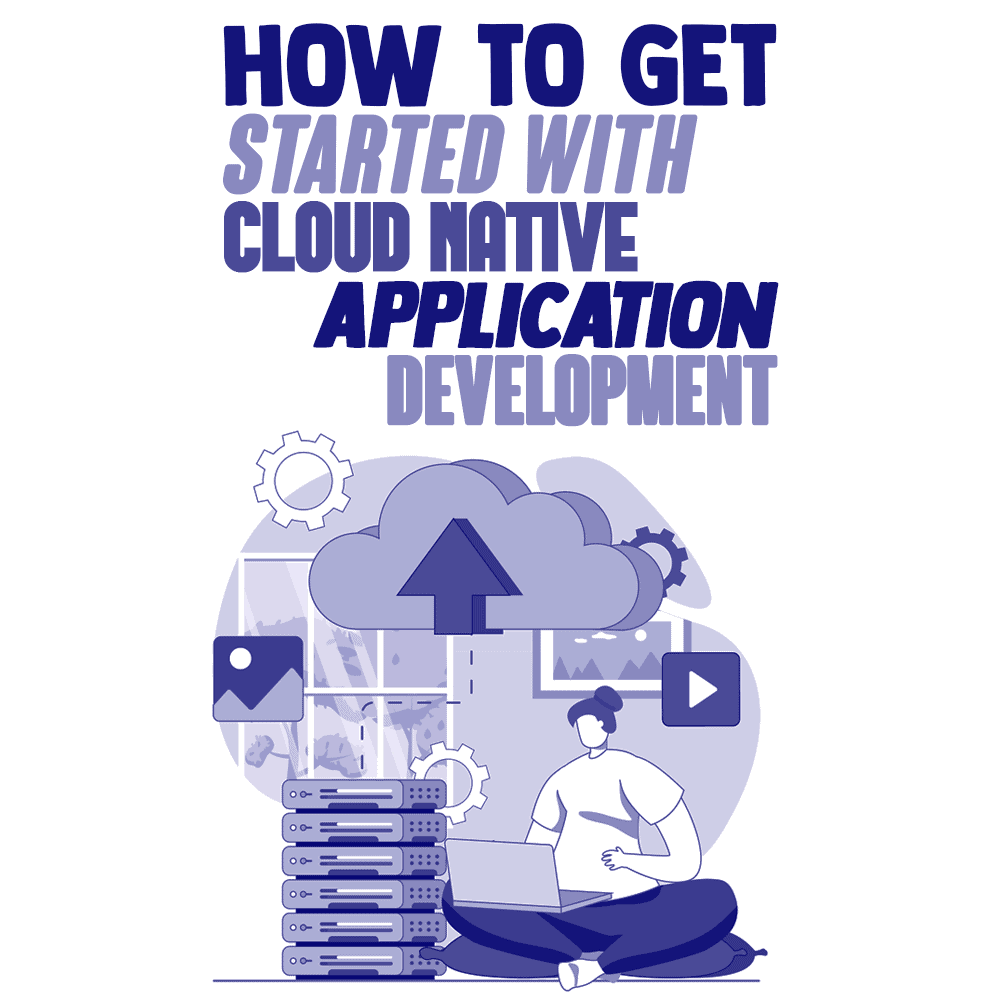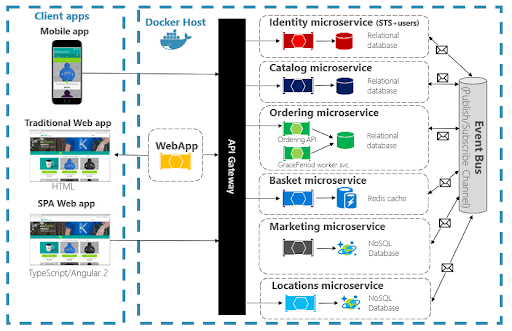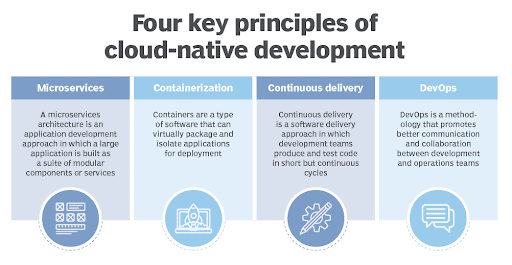 $120 billion.
$120 billion.
That is the size of the worldwide cloud computing market, as per a report by Forrester.
The relentless shift toward software, data storage, and infrastructure to the cloud is driven by the new technologies that make workloads easy to develop and execute in the cloud environment.
Enter cloud-native computing.
According to the Cloud Native Computing Foundation (CNCF):
“Cloud native technologies empower organizations to build and run scalable applications in modern, dynamic environments such as public, private, and hybrid clouds. Containers, service meshes, microservices, immutable infrastructure, and declarative APIs exemplify this approach.”
If you lost them beyond the first five words, don’t worry. We’ll come back to it in the next section.
The cloud—in all forms—is the new face of technology in business. It is now a full-fledged function of the enterprise. It would be safe to say that many large companies are in business on the strength of the cloud apps they run. This includes not just “startups” like Uber and DoorDash but also established finance companies with stock trading apps for brokers.
Data from CNCF says over 6 million developers are now building cloud-native applications for every imaginable business function. The applications are based on best practices such as DevOps and therefore scalable to the limit of the underlying infrastructure.
Let’s explore what cloud-native app development is and how it enables your business to deliver more value.
What Is Cloud-Native App Development?
Cloud-native application development is the process of developing an application for the cloud, in the cloud.
Does that sound too simplistic?
The actual process might seem fairly complex, but the core idea is rather accessible. To break down the process a little more, cloud-native applications are collections of containerized microservices managed across an adaptive infrastructure with continuous delivery.

In more conventional projects, the system admins are responsible for managing infrastructure allocation. With the cloud-native app development lifecycle, an orchestration engine takes control of that process. Meaning, developers or managers do not have to spend time fighting for or justifying the resources they need. Instead, every resource allocation decision is based on preconfigured rules in the system.
The development environment, or the infrastructure on which the app is developed, is “abstracted,” or invisible, to the developer. They can use the technology of their choice to develop microservices, increasing application portability and allowing for quick changes to the code. This is one of the core tenets of Agile development, which is all about developing fast, releasing fast, and catering to real-time needs of business users.
From a process standpoint, here is how to go about cloud-native application development:
- Internalize DevOps practices across development, IT admin, and leadership teams.
- Adopt a container platform like Kubernetes. This forms the basis for running and developing microservices.
- Ensure that developers access containerized technology and that an orchestration engine runs the resource allocation process. The DevOps team can monitor the project through its lifecycle.
- Deliveries must be automated and continuous with sandboxes and built-in observability.
The Business Benefits of Cloud-Native Apps
Cloud-native application opens several paradigms of efficiency and performance augmentation for your business. Here are a few benefits that will have the maximum impact.
1. Cost-Effective Project Lifecycle
One of the most pressing challenges for application development projects is the resource management process. Experienced teams often end up over-allocating resources just to be safe. While this ensures that the project lifecycle proceeds without any hiccups, it ends up increasing the cost of app development and diminishing the possible returns on the project.
A great aspect of cloud-native is that it does not require load balancing, provisioning, or even manual allocation. Cloud resources are autonomously managed, allowing them to scale and contract as necessary for testing and deployment. These savings add up throughout the project lifecycle and make the cloud-native application development process all the more cost-effective.
2. Resilient Architecture
Some product owners find it challenging to work with cloud deployment, since the uptime is directly correlated with that of the virtual machine (VM) in a VDI environment in a data center or the public or private cloud. Cloud-native applications are portable and run independently of the VM. In other words, unless a particular microservice demands a dedicated GPU, the architecture can seamlessly function with next to no dependencies.
The fewer dependencies there are, the more resilient the workload. Troubleshooting also becomes simpler and faster. Since cloud infrastructure dependency is not a concern, administrators can focus their investigation on isolating other potential threats.
3. Faster Time-to-Market
Continuous integration and continuous delivery (CI/CD) are central to the success of cloud-native app development. Until now, the software delivery process was subject to phases—with comprehensive testing needed before releasing alpha, beta, and production versions.
Today, the process can be fully automated with on-demand, intelligent testing and continuous deployment in cloud environments. Used in sync with DevOps processes, this makes it possible for project teams to collaborate across a greater scale and take the risk out of product launches, significantly cutting down the time between start of development to first version release.
4. No Vendor Dependence
Vendor lock-ins are a major issue for pretty much all applications, including those deployed on major cloud providers such as Google, Amazon, or Microsoft. Unless you are a tech giant yourself, the smooth running of your workloads depends on your cloud storage vendor’s availability and efficiency.
Since cloud-native applications are portable, they remove the question of dependency on a single platform or cloud infrastructure. Your developers can continue modernizing and upgrading your application regardless of the underlying architecture and take full advantage of new PaaS and IaaS services.
Key Features of Cloud-Native Apps
The defining characteristics of cloud-native applications are:
- A container-based infrastructure
- An architecture built around microservices
- Use of continuous integration and continuous delivery (CI/CD)
- DevOps processes

Together, these translate to many benefits in the app development process itself:
1. Modular Management
One of the largest challenges of monolithic apps is the issue of scalability. In the beginning, it scales proportionally with the size and expertise of the development team. However, monolithic architecture becomes all the more complex with every added function and feature.
This way, there comes the point in the product’s lifecycle where the product owner cannot understand the full application, development teams have no idea how their module integrates with other modules, and QA teams are unable to test the effects of modifying one feature on the entire application.
The lack of visibility within the application invites more issues, since developers cannot work on additional functionalities. The very architecture of the application becomes chaotic and small changes can trigger large failures.
These structural issues are solved by using microservices, which are separately built modules that are responsible only for one particular feature each. As a result, parts of the app can be tested and updated without the need to change the code or runtime of the entire application.
2. Autonomous Resource Allocation
With cloud-native apps, developers don’t need to directly interact with application programming interfaces (APIs) of the cloud infrastructure provider. Instead, DevOps teams can set a centralized policy for allocating compute, memory, and storage resources per container (within which the application is developed).
Automatic resource allocation has a direct impact on the return on investment (ROI) of the project. Thus, every single decimal over or under allocated funds alters the possible success of the application. Autonomous resource allocation mitigates these risks by accurately matching the application’s needs with the available resources.
3. Asynchronous Development
Cloud-native applications are essentially aggregated and containerized microservices. What this means for users is when one microservice becomes dysfunctional, it does not impact the performance of other microservices. Each microservice is encapsulated and has its own dependencies, so one microservice doesn’t hold the whole application to ransom.
The same logic applies to the development process. Unless the containerized microservices have common dependencies (in which case, those can be replicated or separated), they can be asynchronously developed, tested, and added to the production app. Therefore, you can develop multiple features or application modules in parallel without worrying about integration problems.
4. Rapid Scaling
While both cloud and microservices are paving the way forward, businesses still have legacy infrastructure investments that are yet to be fully utilized. Since cloud-native apps are collections of autonomous services packaged as containers, they can scale-out and scale-in (use more or less compute or storage resources) dynamically, unlike VMs in traditional infrastructure.
Cloud-native apps allow for API-based integrations with legacy systems and data. This enables even small businesses to accelerate their digital transformation process as they transition from traditional infrastructure to the cloud.
5. Comprehensive Application Intelligence
Microservices lend themselves very well to isolated scrutiny, analytics, and assessments. So, developers can gauge the performance of each microservice on a standalone basis as well as in the context of the entire project. The full-stack observability and specific insights make it easier to make adjustments to the application because of the modular and resilient architecture.
Over to You
Cloud-native applications are designed for the next era in software development and cloud technology. With its versatility and agility, cloud-native enables organizations to match their technology efforts to their business goals. Whether you’re an SMB or an enterprise, you can now use cloud-native wisely to help solve your business concerns and improve operational efficiencies.
